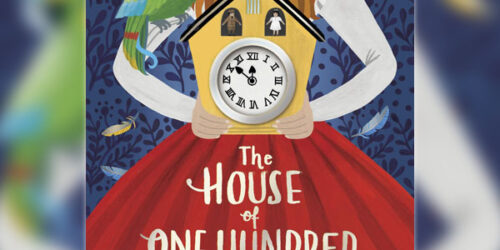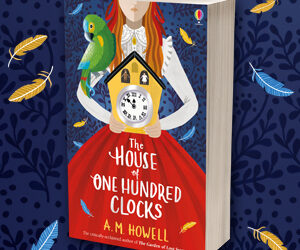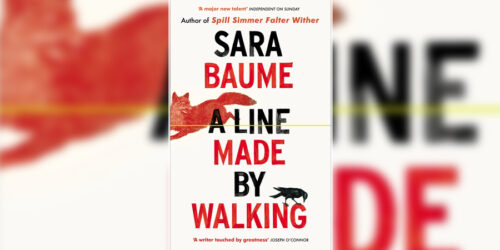
In our final NCW Book Club of 2021 we’re reading The House of One Hundred Clocks by AM Howell. We hope you’ll join us in reading the book and joining the conversation – find out more about all the ways that you can get involved.
The House of One Hundred Clocks is AM Howell’s award-winning middle grade novel that follows the adventures of Helena when she and her father move to Cambridge to work in the clock-filled home of the Westcott family. Blending historical fiction with lively characters and empathetic writing about grief, the story has plenty of twists and turns that will keep readers of all ages guessing until the end.
Here we share a writing exercise inspired by AM Howell’s research that led to the book, with the aim of generating story ideas. While this exercise is written with fiction in mind, the approach could be adapted for writers of poetry and non-fiction.
Let us know how you get on over on our Discord community. Happy writing!
The stories of things
As AM Howell details in the author’s note in The House of One Hundred Clocks, the book was partly inspired by a visit to Moyse’s Hall Museum in Bury St Edmunds, which has a notable collection of clocks. Throughout the book AM Howell uses objects to help tell the story of Helena and Florence – for example, the chapter titles, such as “Clock Parts”, “Hatbox” and “Empty Cage” represent pivotal moments in the story and offer the reader clues as they go along. In this exercise we’ll look at two ways to build stories from objects. You can try just one or both of them, and see which works best for you.
Object-first approach
Next time you visit a museum or similar institution, keep an eye out for an interesting object that might spark a story. Many museums, art galleries and other collections of interesting objects now digitise their collections, so even if you can’t visit in person there will be plenty of inspiration online. Even household objects can inspire stories, so take a look closer to home, too.
When you’ve found an object that sparks your interest, see if you can find out the following information:
- When and where does it come from?
- Who did it belong to?
- How would it have been used?
- What would life have been like for this object, and for the people who lived near it?
- What did the object mean to its owner?
- What does it mean now, to you, in the context of the place where it’s kept, and to other people?
Some of these details will be possible to uncover through research, and others will need to be filled in with your imagination. The combination of concrete detail and unanswered questions can be fertile ground for generating stories.
For example, Norfolk Museums Service has comprehensive information about the historical context of this farm labourer’s clothing. But the webpage doesn’t detail who its owner was, and there’s some mystery about why the clothes were found up a chimney. Just enough room for a story to grow…
Character-first approach
AM Howell associates various objects with different characters throughout The House of One Hundred Clocks. For example, Florence wearing unexpected clothes makes her both a distinctive character and, later on, gives an insight into her family and emotions. Helena’s father’s dedication to his tools show his intense focus on his work, and the absence of objects in the Fox family’s empty shop shows the misfortune that Mr Graham is risking. Similarly, Katherine Westcott’s impressive hats are a distinctive feature that later suggest an ominous twist.
As you create your own characters, what distinctive objects are associated with them? Do they use certain objects in their daily life, or have a particular way of dressing? What is precious to them, and why? What objects do they treasure, and which do they overlook? How do they feel about the objects around them?
To develop a story or sketch from your character and their associated objects, try one of the following:
- Your character is holding an object that is very precious to them. Write a short story or sketch detailing their memories associated with that object. Think about time in particular – how will you distinguish between memory and the present? Will the story be linear or nonlinear?
- Your character picks up an object that has been discarded by someone else. What is it, and why have they chosen to retain it? Write a short story or sketch tracing the journey of the object as it passes from one person to another. Think about relationships in particular – why do the characters have such different perspectives on your chosen object? What is it that draws them to the same place and the same item?
- Try the reverse of the exercise above – your character has lost an object that is useful to them and which they need immediately or in the very near future. How do they react to this loss? What are the consequences of this loss? What might they need to do, or who might they need to talk to, in order to recover the object?
You may also like...
NCW Book Club: The House of One Hundred Clocks by A.M. Howell
Join us and share your passion for reading!

27th October 2021
‘The House of One Hundred Clocks’ wins East Anglian Book of the Year
Suffolk-based children’s writer A.M. Howell takes top prize at the East Anglian Book Awards

19th November 2020
A Line Made by Walking – questions and activities for readers
Sara Baume’s Goldsmiths Prize-shortlisted novel is this month’s NCW Virtual Book Club read

15th May 2020






